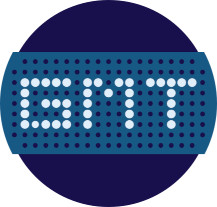DFT
At GMT, we intensively use and develop new features in various density functional theory (DFT) codes to model the electronic, magnetic and transport properties of nanosystems. In particular, we use the following modeling platforms

Tight-Binding
At GMT, we are using and developing various types of tight-binding (TB) approaches. TB model is based on a description of the electronic Hamiltonian in an approximate set of wave functions made of a superposition of atomic-like orbitals.
Some of our models are semi-phenomenological with a limited basis set, some are based on a Wannier expansion describing the band-structure at an ab-initio level.
The localized nature of the TB basis provides a straightforward and efficient scheme for implementing physics theories. Hence, our strategic plan involves a modelling effort taking advantage of TB basis specificity by adding new features and consolidating our effort to develop a unified platform.

Keldysh (quantum and semi-quasiclassical kinetics), Landauer-Büttiker approach
Keldysh formalism generalises quantum field theoretical methods to non-equilibrium systems, whose dynamics can then be studied via diagrammatics and kinetic equations. The Landauer-Büttiker approach is based on scattering theory. The two formalisms complement each other quite well, and are often used jointly to describe transport in nanostructures.





